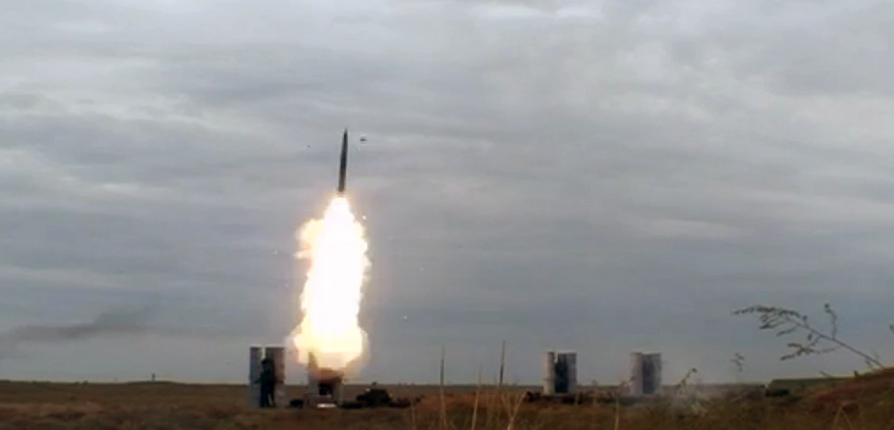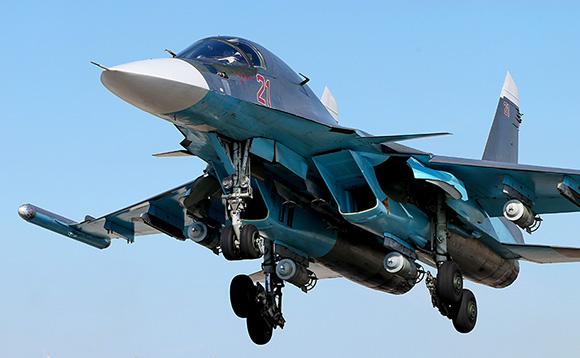Putin is the master of the Syrian sky with an overall range of 500 km. It could not be defined otherwise what is happening in these hours with the entry into service at the Hmeymim base near the Bassel al-Assad International Airport of the anti-aircraft line S300 / S400. In addition, obviously to the defensive screen represented by the Moscow, close to the port of Tartus.
Let's start from the defensive screen represented by the Moscow which extends to the southern area of Turkey, home to the bases used by the US for raids in Syria. The Russian General Staff was clear yesterday: any enemy threat will be disintegrated. We need to understand when a threat, once detected on the radar, will be detected as such.
Il Moscow we said, imposing carrier-killer with its SS-N-12 Sandbox launched in swarms and with 64 S-300 PMU-1/2 surface-to-air missiles. Those 64 state-of-the-art missiles, capable of shooting down both fighters and ballistic missiles, make the Slava-class carrier a nightmare for the coalition. The most powerful ship ever built by the Soviet Navy requires the coalition to review the entire strategy.
Moscow, at least in these hours, seems to have closed in a hedgehog. The feeling is that they no longer trust anyone in the Kremlin. But the Turkish trap (the violation of the airspace happens regularly from both sides and were the order of the day during the cold war), gave Putin the pretext to control Syrian airspace.
The Moskva confers a coverage of 150 km 360 degrees from the port of Latakia. The base of Hmeymim is 77 km away. Moscow has confirmed a double line of defense. The S-300 is considered lethal against all fourth generation fighters and, in any case, against all carriers not equipped with the technology. stealth. The S-400 version, on the other hand, was designed to intercept threats stealth Westerners.
The 9M82M missile known as "Antey-2500", (code name NATO SA-23 Gladiator \ Giant) is specifically designed for tactical defense against medium-range ballistic missiles or enemy aircraft. It can track up to 100 targets, being able to engage 12/24 of them at a distance of 200 kilometers (124 miles) and at a height of 27 kilometers (about 17 miles). The SA-23 is believed to be immune to most Western ECM countermeasures with an operational ceiling of thirty thousand meters. L'Anteyonce put online, it requires no maintenance for at least ten years, while its warheads are believed to be capable of defeating even the most modern Western ballistic missiles. It is driven by an inertial system with mid-range radio update, while in the terminal phase it relies on a semi-active radar.
The problem is that the Russians have deployed the V4 version with a range of 400 km at the Hmeymim base. For the Russians, there is no aircraft (including the B-2, F-22 and F-35) capable of dealing with an S-400 system with impunity. The S-300 (and S-400) systems represent the highest point of Russian ground-to-air defense systems. They are designed to protect areas of strategic importance. Each battery can attack more than half a dozen targets simultaneously.
The main difference from the previous strategic SAM generation is that the S-300 is a mobile system. Not only that: the S-300s are networked. This means that in an integrated air defense system, the S-300s represent an impossible challenge for all existing fourth generation aircraft. F-15, F-16 and F / A-18: they would have little hope of leaving an area protected by the S-300s unscathed.
The S-400 Triumph (NATO designation SA-21 Growler) is a Russian anti-aircraft missile system designed to destroy all modern and advanced aerospace targets at a range of up to 400 kilometers (248,5 miles), practically double the range of the MIM-104. American patriot. The S-400 Triumph, an update of the S-300 series, has been in service with the Russian Armed Forces since April 2007, with operational use in August of the same year. To date, the Russians have four regiments armed with S-400s in line to protect national airspace in the Moscow region, the Baltic enclave of Kaliningrad and the Eastern Military District. For the Russians, there is no aircraft (including the B-2, F-22 and F-35) capable of dealing with an S-400 system with impunity.
 (photo: MoD Russian Federation)
(photo: MoD Russian Federation)












